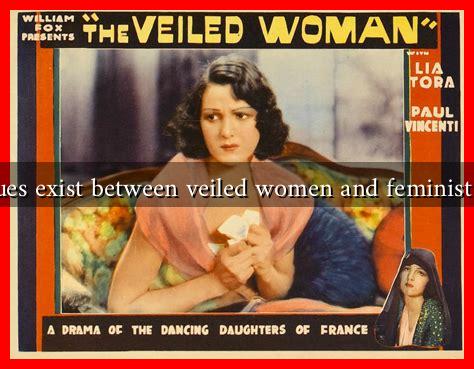-
Table of Contents
What Dialogues Exist Between Veiled Women and Feminist Movements?
The intersection of veiling practices and feminist movements presents a complex and multifaceted dialogue that challenges preconceived notions of agency, identity, and empowerment. While some view the veil as a symbol of oppression, many veiled women assert their autonomy and agency, leading to a rich discourse within feminist circles. This article explores the various dialogues that exist between veiled women and feminist movements, highlighting the nuances and diverse perspectives that shape this conversation.
The Veil: A Symbol of Oppression or Empowerment?
The veil, often associated with Muslim women, has been a focal point in discussions about gender equality and women’s rights. Feminist movements have historically critiqued the veil as a symbol of patriarchal oppression. However, this perspective overlooks the voices of many veiled women who embrace the veil as a form of self-expression and empowerment. The dialogue can be summarized in the following points:
- Agency and Choice: Many veiled women argue that their choice to wear the veil is an expression of their identity and autonomy. For instance, in a study conducted by the Pew Research Center, 62% of Muslim women in the U.S. reported that wearing the hijab was a personal choice.
- Resistance to Stereotypes: Veiled women often challenge stereotypes associated with their attire. They assert that the veil does not define their capabilities or aspirations, as seen in the rise of veiled women in various professional fields, including politics and academia.
- Intersectionality: Feminist movements that embrace intersectionality recognize that the experiences of veiled women are shaped by multiple factors, including race, class, and religion. This understanding fosters a more inclusive dialogue within feminism.
Case Studies: Voices from the Ground
To better understand the dialogues between veiled women and feminist movements, it is essential to examine specific case studies that illustrate these dynamics.
The Hijab and Feminism in France
In France, the debate surrounding the hijab has been particularly contentious. The French government’s ban on religious symbols in public schools in 2004 sparked significant backlash from Muslim communities. Feminist groups were divided; some supported the ban as a means of promoting secularism, while others criticized it as an infringement on personal freedoms. Notably, veiled women organized protests, asserting their right to wear the hijab as a form of resistance against state oppression.
Veiled Activism in the Middle East
In countries like Egypt and Iran, veiled women have played crucial roles in feminist movements. For example, during the Arab Spring, many women donned the veil as a symbol of their cultural identity while actively participating in protests for democracy and social justice. Their involvement challenges the notion that veiling equates to passivity, showcasing how the veil can coexist with activism.
Global Perspectives: Diverse Feminist Movements
The dialogue between veiled women and feminist movements is not limited to Western contexts. Globally, various feminist movements have emerged that embrace the experiences of veiled women:
- Muslim Feminism: This movement seeks to reinterpret Islamic texts and traditions to promote gender equality. Scholars like Amina Wadud advocate for a feminist reading of the Quran, emphasizing that the veil can be a choice rather than an obligation.
- Secular Feminism: In some secular feminist circles, there is a push to support veiled women’s rights while also advocating for secular policies. This approach aims to create a space where women can choose their attire without state interference.
- Transnational Feminism: This perspective emphasizes solidarity among women across borders, recognizing that veiled women face unique challenges that require collective action and understanding.
Conclusion: Bridging the Gap
The dialogues between veiled women and feminist movements are complex and multifaceted, reflecting a spectrum of experiences and perspectives. While some feminists view the veil as a symbol of oppression, many veiled women assert their agency and challenge these narratives. By embracing intersectionality and recognizing the diverse voices within feminist movements, a more inclusive dialogue can emerge. Ultimately, fostering understanding and solidarity among all women, regardless of their attire, is essential for advancing gender equality.
For further reading on this topic, consider exploring resources from organizations like Women’s Rights Advocacy and the Pew Research Center.

